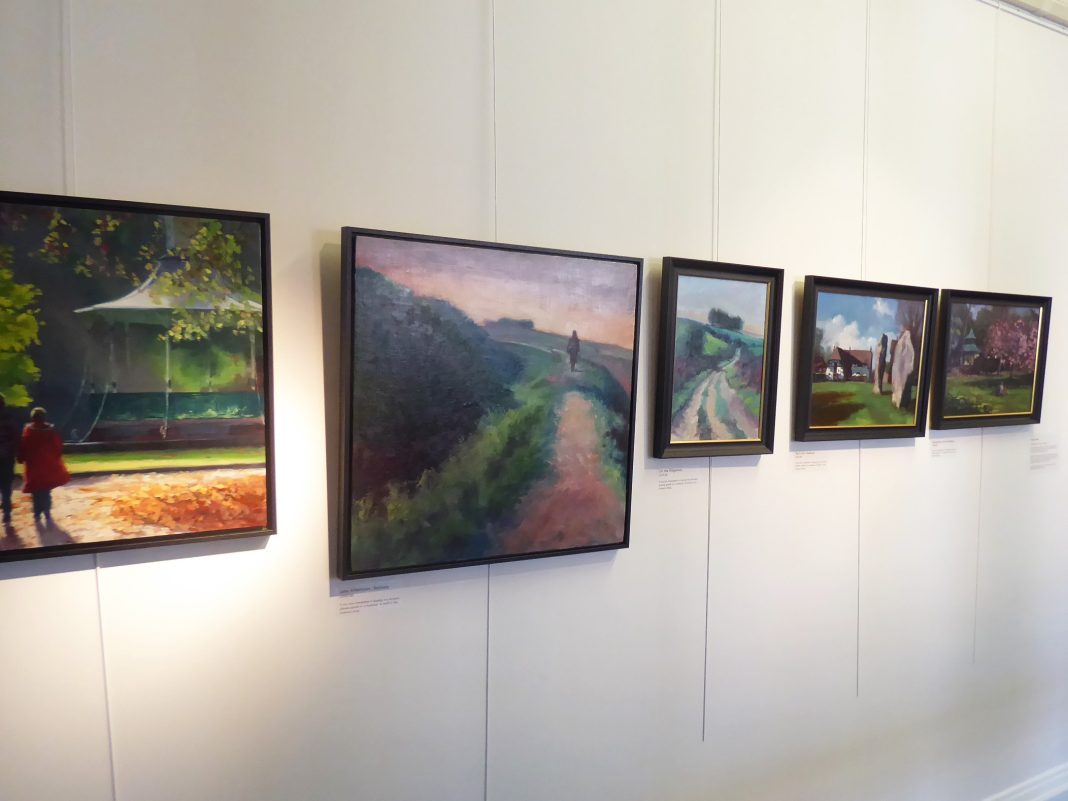Having completed the highly enjoyable Sarsen Way I’m heading home. I need to get back to Swindon for a train. My bus from Salisbury takes two hours to reach Swindon, passing all those rural bus stops I Used last week. My bladder just lasts out.
I was impressed with the bronze statue by Elizabeth Frink in the grounds of Salisbury Cathedral yesterday. I read that the Swindon Art Gallery has a fine collection of contemporary art and as a bonus a Frink exhibition until November.
I’ve only got a couple of hours to spare so decide on the Art Gallery over the Great Western Steam Museum. Here I am walking past that bus station mural avenue once more, but you have had enough murals – let’s go and see some proper art. As soon as I wrote that I realised I was denigrating the street art which I much admire. Let’s go and see some alternative gallery art.
The venue is tucked away down a side street in Swindon’s Council Offices.
The gallery is understated. On the first floor of the offices is a small information office/shop. I glance briefly at the historical museum, all things Swindon over the years. Much of that history is related to the thriving C20th railway hub that would become one of the world’s largest railway engineering works. Where has it all gone?
A football programme catches my eye. “In1969 Swindon Town F.C. recorded the best result in its history, winning 3–1 in the League Cup Final against Arsenal at Wembley Stadium, a match watched by close to 100,000 people” – I was one of them. The scores were level 1-1 at full time but Don Rogers scored two for Swindon in a rousing extra time.
In the corridor are some exhibits by contemporary artists, the art is for sale.
Some of Swindon’s large art collection is on display in one of the smaller rooms. I’m always pleased to see a Lowry and I never knew Desmond Morris painted. A friend of mine has a small collection of Clarice Cliff ceramics.
A larger room was given over to the Elisabeth Frink exhibition. 

“Dame Elisabeth Frink (1930-1993) is one of the most significant sculptors of the 20th century. This exhibition focuses on an important body of work produced between 1976 when Frink moved to her studio in Woolland, Dorset, and her death in 1993. This exhibition will explore her artistic process, personal life and the influences that shaped her work. Bringing together objects from public and private collections, celebrating the enduring legacy of Elisabeth Frink”
The display was diverse with sketches, paintings and sculptural pieces. Emphasis was put on her love of animals and her relationship with them in our environment.
A video was playing of Frink in her studio and gardens.  Some of those heads were on display. exhibiting human repression, frailty, and hope.
Some of those heads were on display. exhibiting human repression, frailty, and hope.

Two rooms were closed, preparing for a Wessex and Hardy exhibition, but there were more paintings in the corridor. The best of the rest I thought was… 

Time for that long train journey home.
























